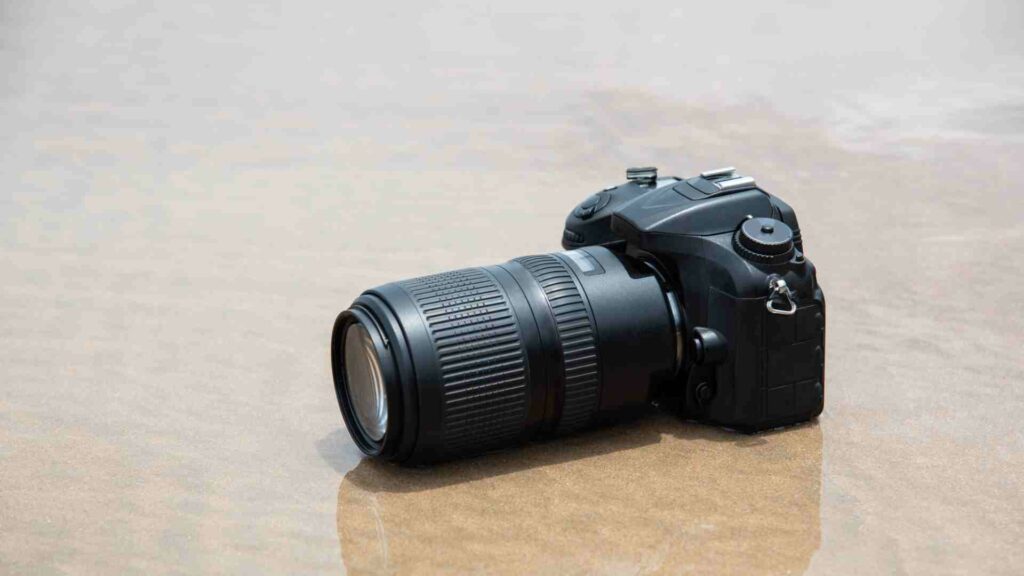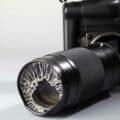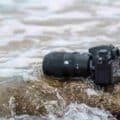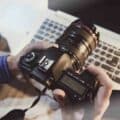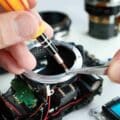Ahoy there, adventurous photographer! Are you prepared to set sail and take pictures beneath the ocean’s depths? Going beneath the surface requires more than diving skills. As a DSLR photographer, you need thoroughly understand how even a drop of water could wreak havoc on your camera.
Water and electronics are rivals in this never-ending battle — meaning you must arm yourself with knowledge about protecting your camera from aqua disasters before swaying below the sea.
If facts and figures fascinate, feast your brain on this blog post full of tips and tricks for safely capturing stunning underwater photographs without risking water-damaged equipment. So grab some scuba goggles — it’s time to learn more about assuredly blocking DPSL damage down under!
Understand the Dangers of Water Damage to Your DSLR Camera
Owning a DSLR camera can bring a lot of excitement and creativity into your life, but it’s essential to be aware of the possible dangers of water damage. Droplets and moisture can work their way into even the most minuscule crevices in your camera, leaving unbearable consequences that make you regret not planning. From sticky buttons to utterly destroyed circuits, water damage is an issue which can cause hefty expenses – AND leave you harping over lost memories.
Don’t let water ruin your plan for capturing lifetime memories! It’s always best to maintain caution when taking snaps near the beach or running through rain showers with unexpected force. If, by any bad luck, you find yourself in a situation where your camera is exposed to H2O, do yourself a massive favour by quickly dabbing the surfaces with some sort of cloth and run for the nearest professional assessment center— quicker than a flash.
By heeding this advice, you will never have to experience what it feels like to come face to face with irreversible destruction caused due to inadvertent moisture contact on your adored DSLR camera!
Identify Common Causes of Water Damage
Getting water damage sucks. You spend an arm and a leg to upgrade your camera; the last thing you want is water to do anything close to touching it. Rain, humidity, and submerged/dropped cameras are the three common disasters that can lead to a massive headache—and losses in the pocketbook.
If you’re outdoors firing off shots amid a thunderstorm or drizzle, whose downfall could be pointed to here? That’s right – rain! Sure, apparent droplets hitting your lens can be pretty crushing… But less overt moisture lingering in the air can be even deadlier. Humidity. Temp changes. You didn’t think all added water was after that light snack, did you? This combination can form condensation on camera lenses and worse.
Hungry for danger? Dropping or completely submerging your camera sounds like loads of fun. Hey—if you’ve got plenty of dough lying about, why not take a dip with your device? Unfortunately, in this case, chances suggest staying V clean out of liquids whenever possible; water is one destructive element no lens cap will stop. Maybe airtight cases or silicone covers sound doable for protection.
Learn How To Prepare Your DSLR Camera Against Water Damage
Experienced photographers know that water and electronics don’t mix, and nobody asked for them in unexpected rain or other wet incidences…nobody asked for them. That devastating feeling of realizing your beloved DSLR camera is damaged by sudden liquid droplets – we’ve been there! Though repairs can be expensive afterwards, prevention from water damage is doable.
Firstly, investing in a waterproof camera bag is worth the peace of mind it brings. Keep your gear safe year-round, no matter the weather!
Then, you’ve always got to have a towel nearby just in case the drops of rain or snow make their way onto your photog equipment. Keeping them dry will keep them working!
Finally, consult a repair expert to learn quarterly maintenance that can save you money and keep your DSLR performing vibrant self(i.e.)s for years to come! By utilizing these tips and tricks on preventing water damage on cameras – no dunks won’t bring down its performance unlucky misfortunes again.
Implement Tips For Keeping Your DSLR Safe From Moisture and Condensation
Getting a DSLR camera for yourself can be a pretty hefty commitment. Imagine spending hard-earned cash on your newest hobby, only to fall victim to moisture and condensation, potentially damaging it. Tragic! Therefore, you must take extra special care when utilizing your equipment.
Remember that using waterproof camera bags or cases can go a long way in shielding your baby from rainy weather or even accidental splashes. This is one of the hallmark ways of protection against accumulating loose condensation deposits within the packed area of your bag.
Apart from waterproofing instruments, tossing in some trusty moisture-absorbing gel packs is like providing topical skin treatments by professional estheticians; they provide extra care for preventative litigation (Investment Insurance!). Usually, every month or so, make sure you peel out those dusty guys and throw in a fresh set GPMs (Gel Pack Managers).
Also, be aware of sudden temperature changes, which may become inevitable sometimes during brief trips with family or friends. Such surprises would cause outer layers of condensation, whether on the lens’ covering or inside any intricate components of the body framework itself! To avoid such setbacks or unsatisfactory results like diffusion fogging… try warming & cooling off your camera from abrupt environmental walks before usage and fast adjustment periods.
So, put a little bumper toolset up for protection, and all will be cheery with clicking away perfect pictures for holidays gone great and beyond! With tips like these make easy, soon you’ll become a much commiserated & stylish photographer among islands afar from gentle briny shores!
Final Words
Well, there you have it, folks. The dreaded DSLR water damage — but don’t worry, there’s hope! Following our advice to prevent water-related disasters, ensure your camera stays safe and sound. Keeping the basics in mind, such as keeping the battery door closed and investing in waterproof housing, is essential. When all else fails, turn to professionals who specialize in repairs of this nature. One wrong move can cost you thousands of dollars, so contact us before attempting any work yourself! So keep these tips in mind and stay dry out there, student photographers!


